- Figure Eight
- This is a very versatil knot most commonly used for attaching ropes
to anchor points. if you only learn one knot, make it this one
- Strength 55% Normal, 40% abnormal
|
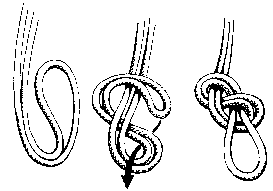 |
Figure-eight follow-through
-
- This variation of the figure eight loop is widely
used for climbing for tyimg on to the rope and for anchoring non-climbing member to a
team. A stopper knot should be added.
|
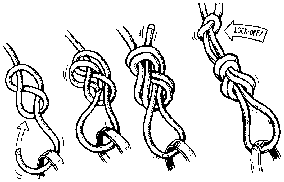 |
Bowline
-
- This can be used for tying rope around a belay but is most often used
for tying the end of a safetly line rope around a person.
- This knot does have a tendency to loosen and. use stopper knot.
- Strenght 50% Normal
|
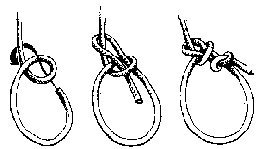 |
Double Bowline follow-through
-
- The double bowline has the strenght of a double eight figure but is
easy-to-untie for that reason many sport climber prefer this knot.
|
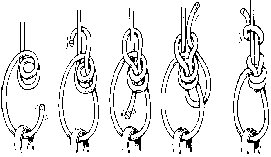 |
- Bowline on the bight
- This is another double loop knot suitable for rigging Y-belays it has the advantage
that iis a bit less bulky than the figure eight
- on the bight.
|
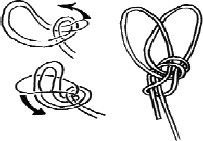 |
Prusik Knots
-
- A classic prusik knot can be used for ascending or standing in a
rope.
|
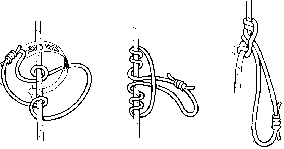 |
Water Knot
-
- Good for Jining two rope, it is primarily used for tying tapes into slings for caving
or climbing.
-
|
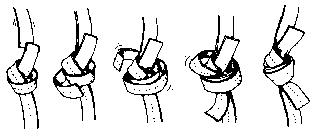 |
Clove Hitch
-
- This simple knot is very useful for when you need a rapid belay
around an object or though a krab.
|
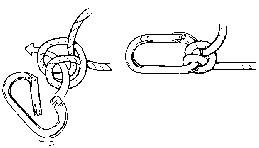 |
- Munter Hicth
- An excellent self-reversing friction knot suitable for belaying
people when climbing or using a ladder. it can also be used for abseiling and gives a
smoother ride than a sticht plate, atc, etc.
- This one is worth learning for all those occasions when you forget
your Sticht Plate, ATC,etc.
|
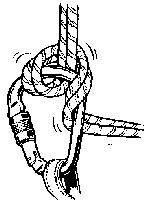 |
 Climbing
Climbing  Caving
Caving









![]() Go to Johnny Cosme Lewis (Climbing and Cavin Page)
Go to Johnny Cosme Lewis (Climbing and Cavin Page)![]() Go to
Johnny Cosme Lewis HOME PAGE
Go to
Johnny Cosme Lewis HOME PAGE